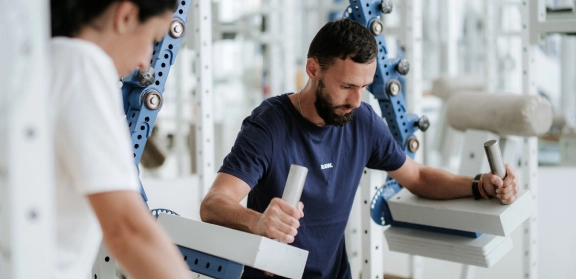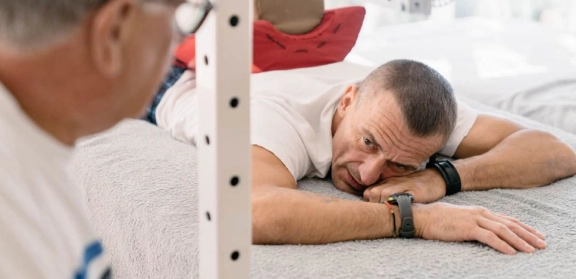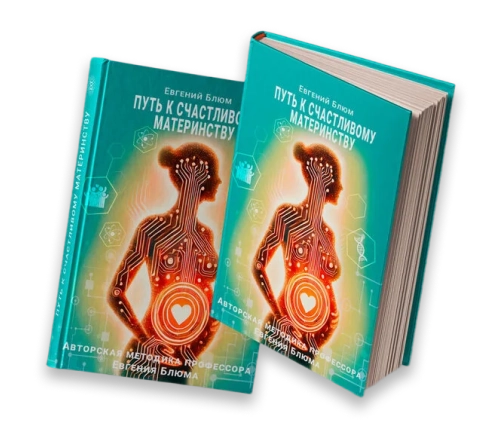Pediatric Cerebral Palsy Treatment
Our medical strategy
Professor Blum's method enables the initiation of rehabilitation from the earliest age, utilising the unique capabilities of his proprietary system of methods and techniques.
- Imperative techniques. When we do everything ourselves, with the help of trained instructors, it allows us to restore the child’s body without requiring their conscious participation. We don’t waste time; we begin immediately by stimulating underdeveloped muscle groups while avoiding overdeveloped ones. Our work focuses exclusively on the weaker muscles, activating the body's natural mechanisms of self-recovery, integration, and differentiation.
- Afferent pathway reinforcement. Everything we initially did for the child in the imperative mode, they gradually begin to do themselves. This approach restores and organises processes that were either not functioning or functioning weakly. It helps transition from general motor chaos to conscious movements and patterns, which, in turn, trigger processes of further mental and psycho-emotional development.
- Restoration of the muscle-joint balance between antagonistic muscles, creating conditions for uniform growth and development, ensuring age-appropriate locomotor development, compensating for motor deficits, and deficits in verticalization.
- Strict ontogenetic sequence of movement restoration. The child must progress through each phase of motor development in the following order: holding the head up, rising up on hands, rolling over both ways, sitting, crawling, standing with support, moving along the support, walking independently, and eventually, running. The key distinction of Professor Blum’s approach is that the child must go through each of these stages sequentially. It is prohibited to seat or stand a child whose locomotor system is not yet ready for these actions. Premature verticalization using walkers, or supports can lead to spinal and joint deformities and asymmetries, resulting in a new cycle of problems and diseases.
In what types of cerebral palsy is rehabilitation possible?
Diagnosis based on six macro-blocks, developed by Professor Blum, allows for the detection of even the slightest tendencies toward the development of cerebral palsy from the very first days of a child’s life. We believe that no day should be wasted; waiting and observing until the age of two is not advisable. If there are any signs that concern the parents, it's important to investigate the situation and begin rehabilitation. There are four main types of cerebral palsy:
- Spastic Form. The most common type, with the main symptom being spasticity or "tightness," causing muscle tension in the lower and/or upper limbs, which impairs normal movement. Increased extensor tone, heightened tendon reflexes, and extended legs are noticeable from the first days of life. Over time, the child begins to lag in physical development, such as delayed head control and crawling. Walking is difficult and has a distinctive pattern.
- Atonic-Ataxic Form. Characterised by reduced muscle tone, muscle weakness, and issues with balance and coordination.
- Dyskinetic Form. Marked by uncontrolled movements of the arms and legs, involuntary muscle twitching in the face and neck, along with difficulties in swallowing and speech.
- Mixed Form. A combination of different types of cerebral palsy, with one type predominating.
An individual rehabilitation program is developed taking into account the medical history, age, developmental delays, previous treatments, as well as the severity and type of cerebral palsy.
General description of the problem
Cerebral palsy (CP) is a complex condition that affects the nervous system and locomotor system, leading to delays in a child's cognitive and physical development. It results in movement disorders, muscle spasticity, and tension, sometimes to the point of restricted mobility. CP is often accompanied by speech disorders, as well as hearing and vision impairments.
The main causes of CP include congenital infections, developmental abnormalities, fetal hypoxia, toxicosis, prematurity, birth injuries, asphyxia, and cesarean section. The first year of a child's life is a period of rapid growth and development, and every day during this phase is critical. If the signs of the condition are detected early and appropriate measures are taken, CP can be prevented.
Professor Blum’s diagnostic method identifies even the most subtle signs of CP, and his approach emphasises the importance of starting rehabilitation within the first months of life. This early intervention allows for the possibility of correcting the condition at the stage of tendencies and predispositions, taking advantage of the rapid maturation and development of organs and tissues during this period.
-
Early initiation of development — activating growth processes without waiting for the child’s conscious participation
-
Strengthening weak muscles and correcting muscle imbalances
-
Restoration of proper motor skills following a natural developmental sequence (from head control to walking)
-
Improvement of coordination and conscious movement, enhancing mental and emotional development
-
Prevention of spine and joint deformities through correct timing of verticalization
-
Accelerated achievement of age-appropriate motor milestones — crawling, sitting, walking, running
-
Overall enhancement of musculoskeletal function and improved quality of life for the child
Objectives of the program
-
Maximising independent motor activityMaximising independent motor activity, eliminating spasticity and seizures, improving the ability to sit and walk, and reducing difficulties with swallowing and speech.
-
Ensuring stable verticalizationEnsuring stable verticalization, improving body balance while walking, and restoring coordination and manoeuvrability.
-
Eliminating muscle contracturesEliminating muscle contractures, adhesions, spinal deformities, muscle atrophy, dislocations, and subluxations of the joints.
Proprietary methodology
Professor Blum's Centre utilises patented rehabilitation equipment with unprecedented adaptability: there is no segment of the body, joint, muscle, or tendon that we cannot stimulate. The impact is delivered with exquisite precision, within a specified range of intensity, the necessary angle of acceleration, and dozens of other controlled parameters. This ensures a planned response even from the weakest muscles and fascial structures, allowing us to address a wide range of rehabilitation tasks for patients with the most severe forms of cerebral palsy.
Successful restoration of functional performance and structural integrity of the locomotor system and the body as a whole is achieved through the method's ability to target weak points with unique biomechanical precision, restoring tissue structure and functions in connective tissue, as well as the muscle, epithelial, and nerve cells embedded within it.
Professor Blum's patented rehabilitation modules ensure constant control of movement range and specific muscle responses, guaranteeing safety, consistency, and predictability of outcomes, while preventing overload—an essential factor for children with nervous system impairments.
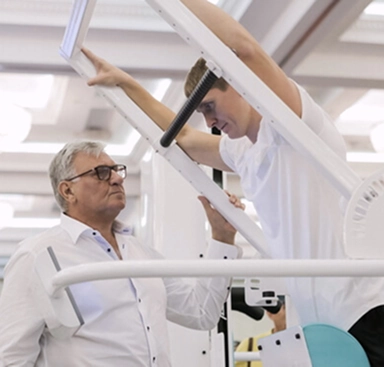
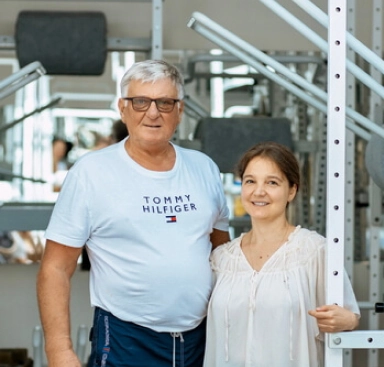
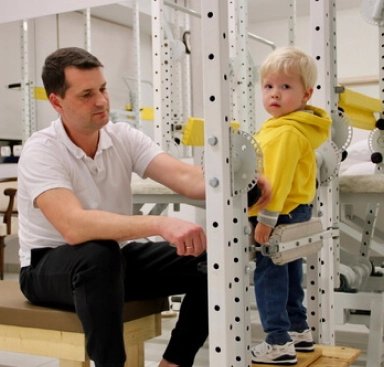
Patient stories

Professor Blum’s Exclusive Rehabilitation System

The center is located in a picturesque corner of the renowned resort town of Marbella, surrounded by cedar trees at the foot of La Concha mountain. Here, science and technology blend with nature, creating a space where the body returns to balance and harmony.
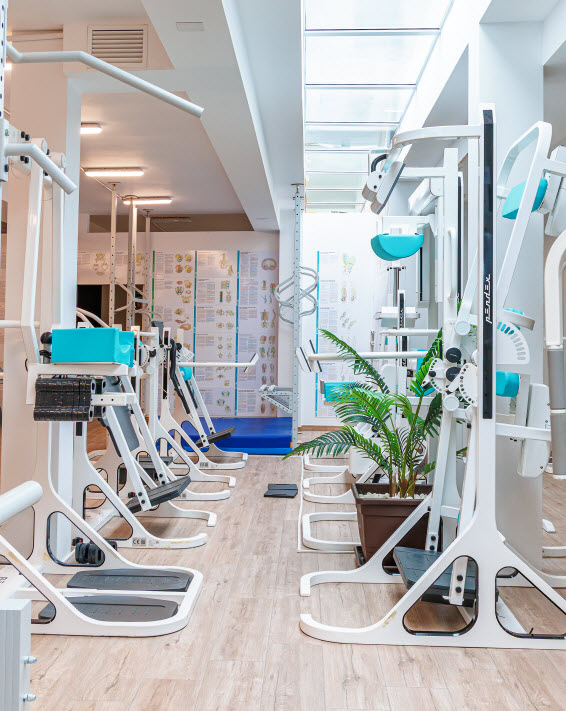
Technologies that deliver results
Select a program
- Personalized Health Recovery Programs
- Disease Prevention
- Customized Check-Up
Q&A
Paediatricians and paediatric neurologists follow the international Gross Motor Function Classification System (GMFCS), introduced by R. Palisano in 1997. This system assesses the development of motor skills and the limitations in a child’s daily movements. The overall evaluation of these factors serves as the basis for diagnosing cerebral palsy.
Currently, there are over 300 causes identified for the development of cerebral palsy. Professor Blum always considers the true causes and underlying factors that may either provoke or reduce the risk of the disease. Harmful trends and habits in modern society create conditions where predispositions can develop into disease. In the case of cerebral palsy, some contributing factors include the abandonment of swaddling, lack of breastfeeding, the use of diapers, overprotection (manifested by constantly carrying the child in arms), and the use of distracting devices such as music, lights, and videos. Premature verticalization—when parents push their child to sit or stand before they are ready—can also interfere with the child’s natural, systematic development. We offer online consultations for parents to help prevent risks and guide them through the critical stages of their child's development in the most effective way possible.
Delaying the diagnosis of cerebral palsy, postponing the selection of an appropriate and effective treatment method, and waiting in the hope that the child will outgrow the issue is a misguided strategy that diverts from solving the problem. Your goal is not to wait for a diagnosis and then take action, but to do everything possible to prevent a diagnosis of cerebral palsy from being made in the first place.
At the end of the rehabilitation course, we always provide "homework" – constructive recommendations for care and exercises that help make up for developmental delays at home, carried out by the parents. These exercises support the progress made during rehabilitation and prepare the child for the next course. It is important to understand that the recovery process for a child with cerebral palsy is complex and lengthy.
The duration of the rehabilitation course depends on the severity of cerebral palsy, the patient's age, the presence of complications, and the degree of motor impairment. The greater the developmental delay, the more intensive and prolonged the rehabilitation process. To determine the exact duration and cost, schedule a free online consultation with a doctor from the Centre.
- Spasticity (involuntary muscle spasms accompanied by pain);
- Seizures, hypertonia (muscle tension even at rest);
- Oculomotor disturbances, constant or intermittent strabismus, vision impairments;
- Extremely sudden, chaotic, or slow movements of the child;
- Unnatural body posture, either overly relaxed or excessively tense;
- Hearing, speech, or swallowing difficulties;
- Skeletal deformities;
- At 1 month, the child does not hold their head up or blink in response to loud sounds;
- At 3 months, the child does not roll over from stomach to back and vice versa;
- At 4 months, the child does not turn their head toward sounds or reach for toys;
- At 7 months, the child cannot sit without support or crawl;
- At 12 months, the child does not walk independently;
- Walking on tiptoes, knees turning inward;
- Brain cysts, epilepsy are detected;
- Difficulty maintaining posture;
- The child performs all actions using only one hand.
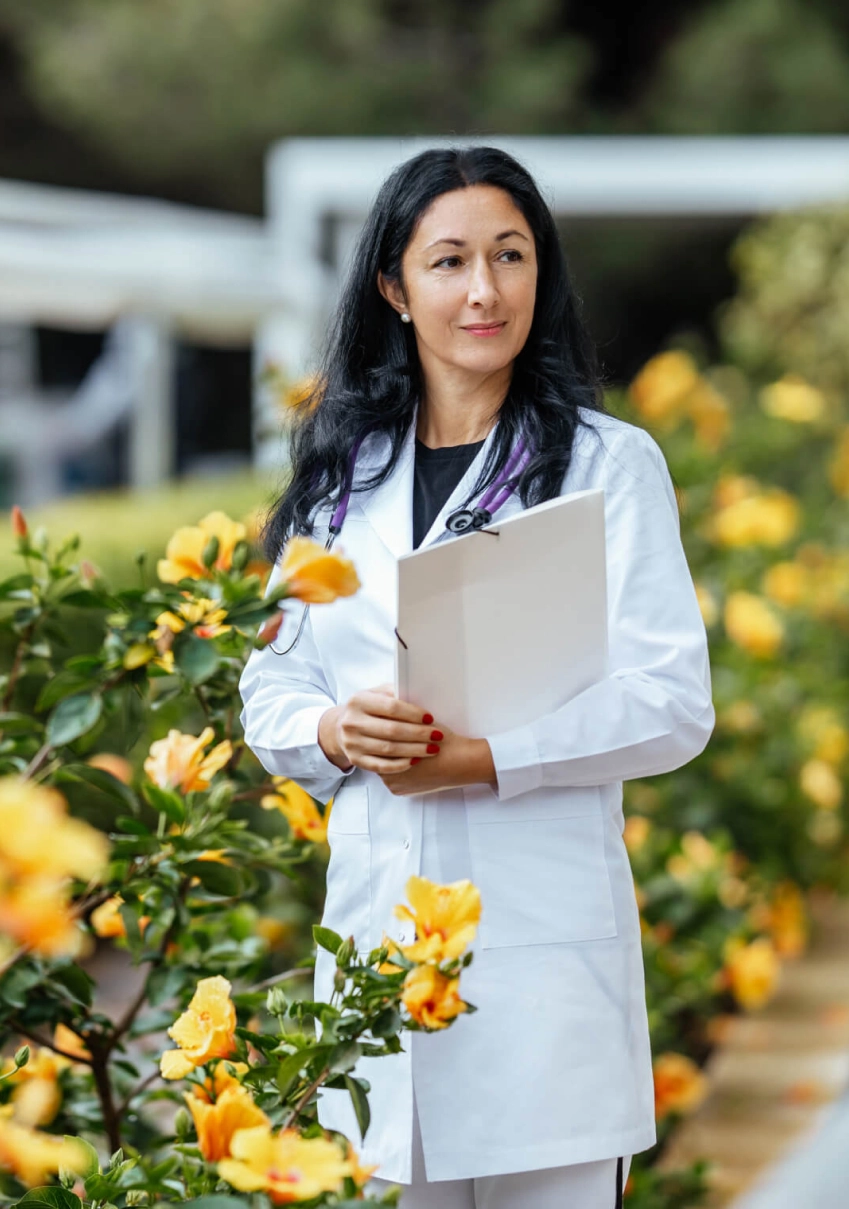
The cost of a course of treatment with a stay in a hotel
- Appointments and consultations
- Creating an individual program
- Conducting personal sessions
- Appointments and consultations
- Creating an individual program
- Conducting personal sessions
Other areas of work of our Center
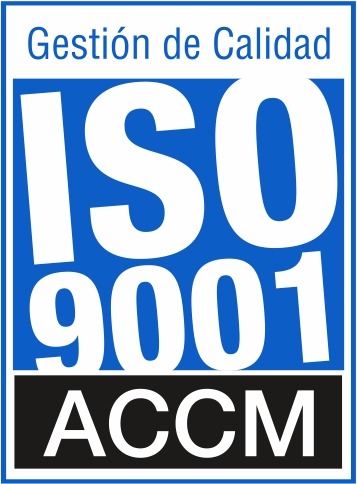







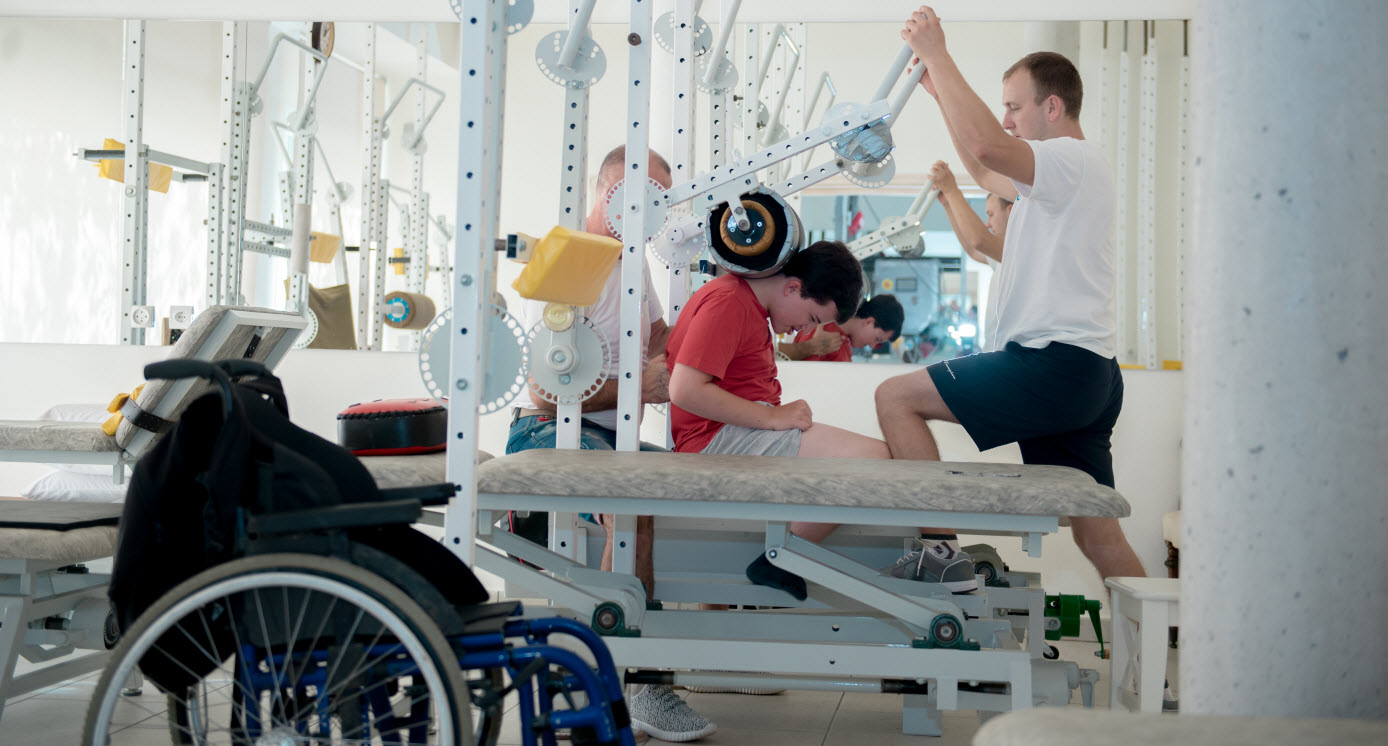






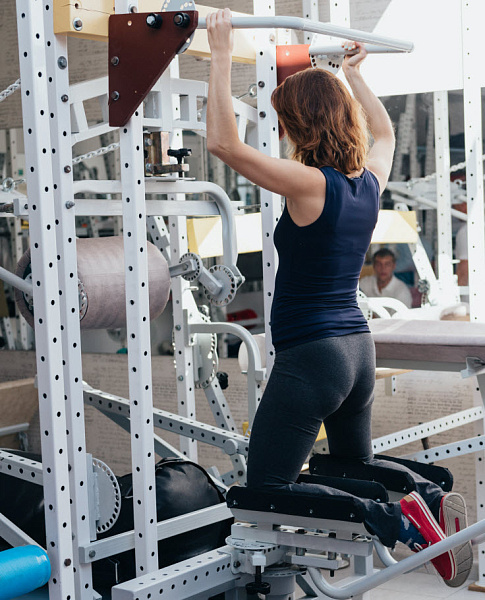
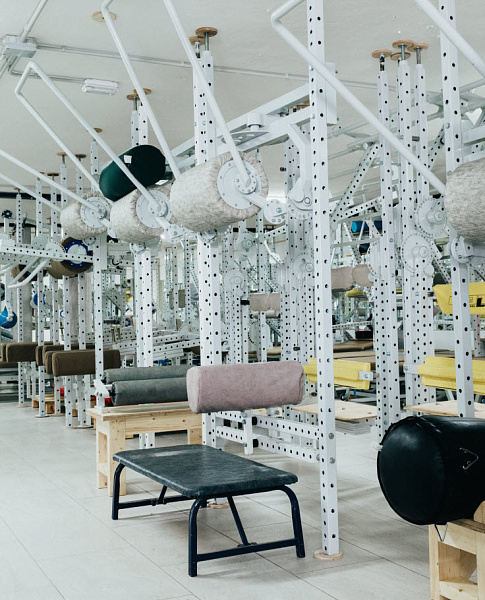

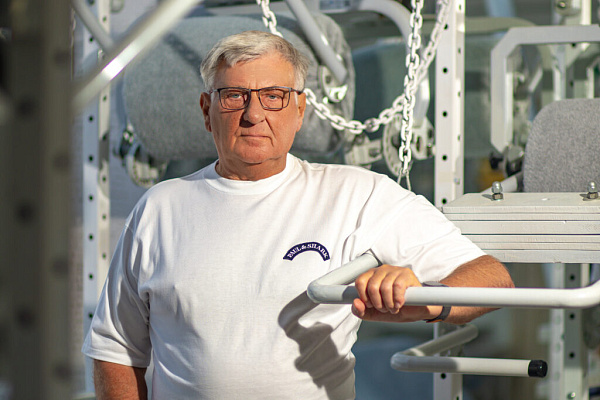
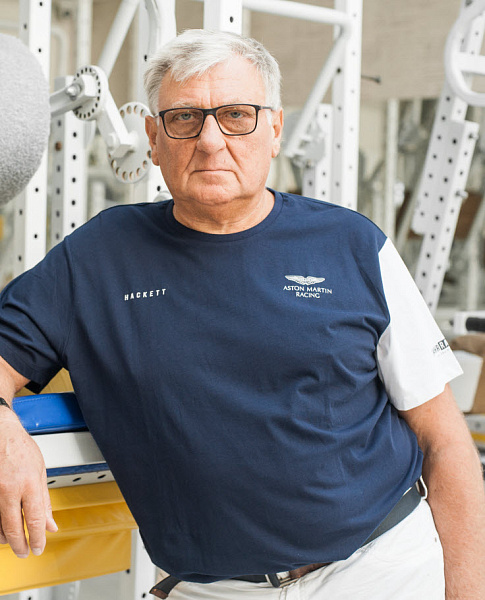
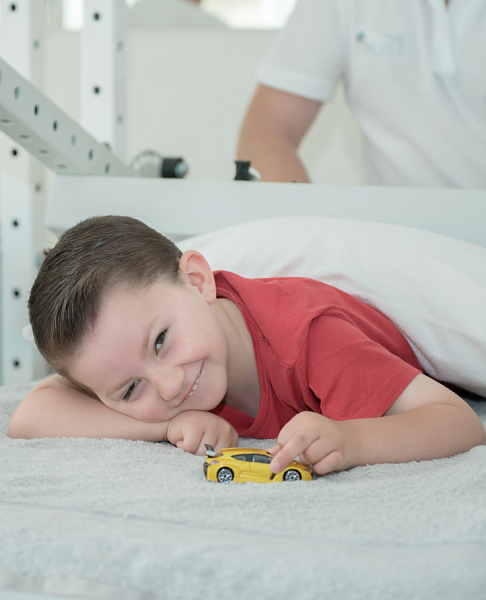
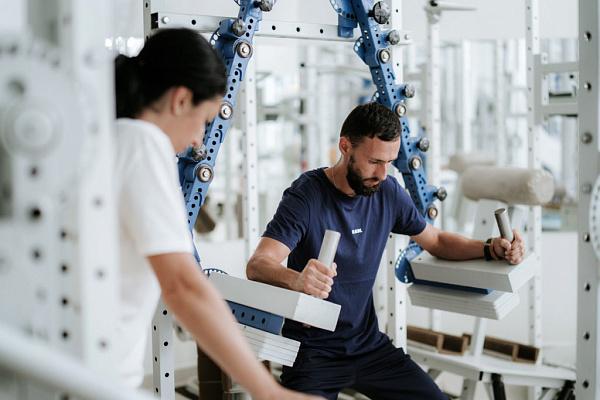
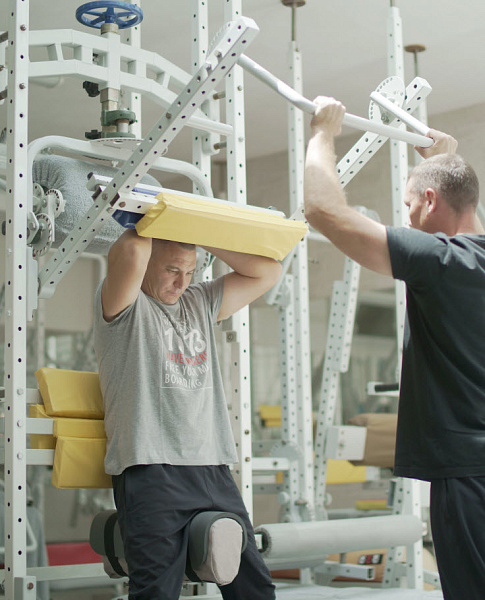
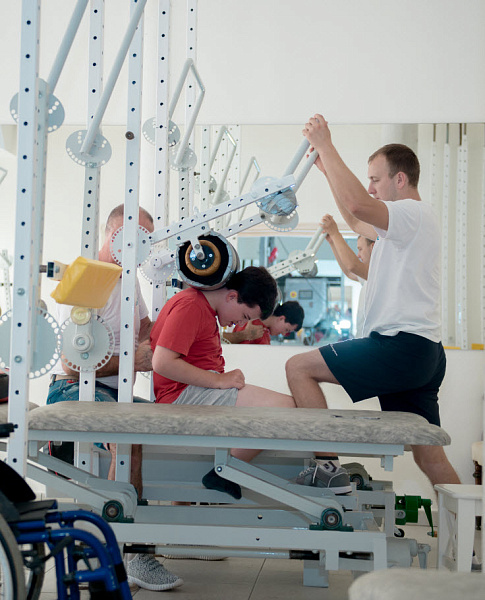
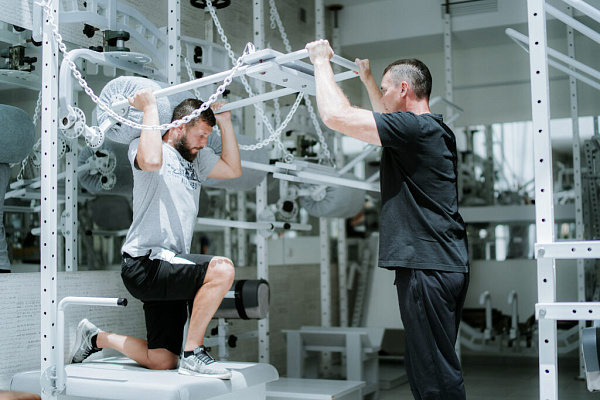
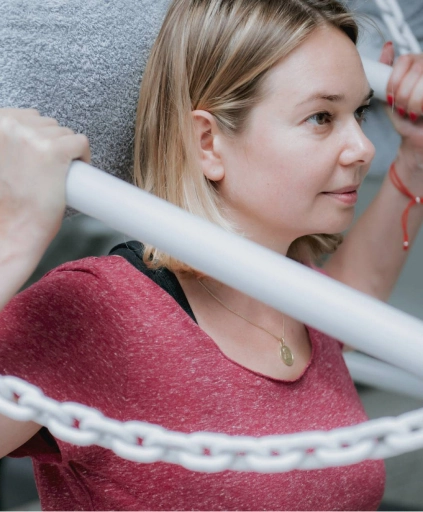
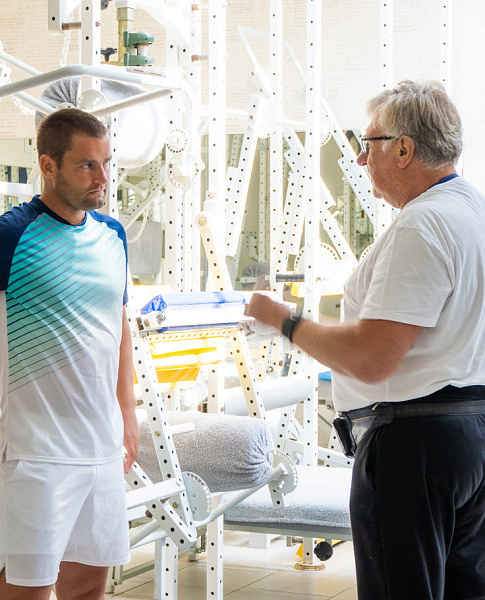

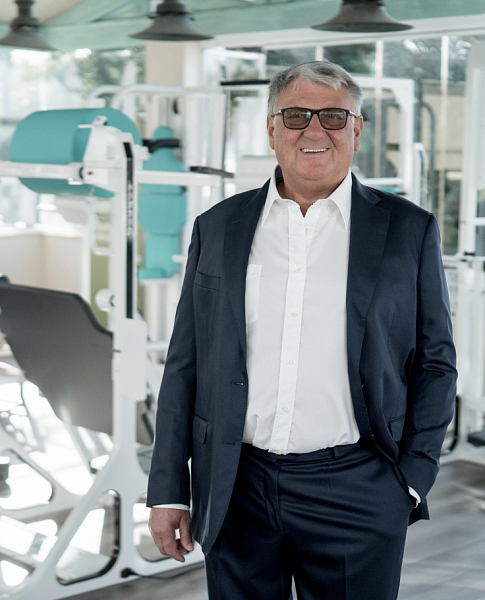

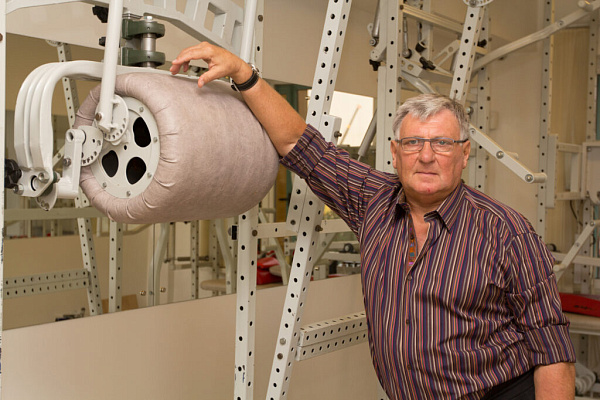
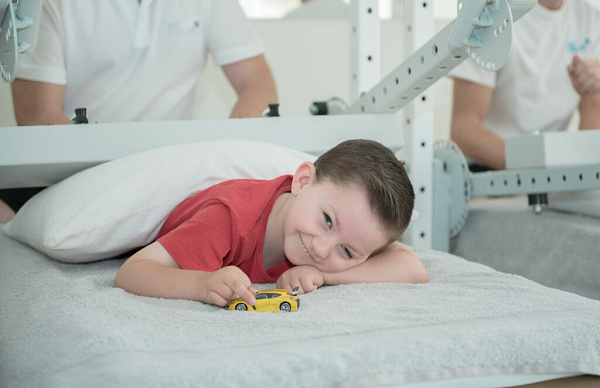
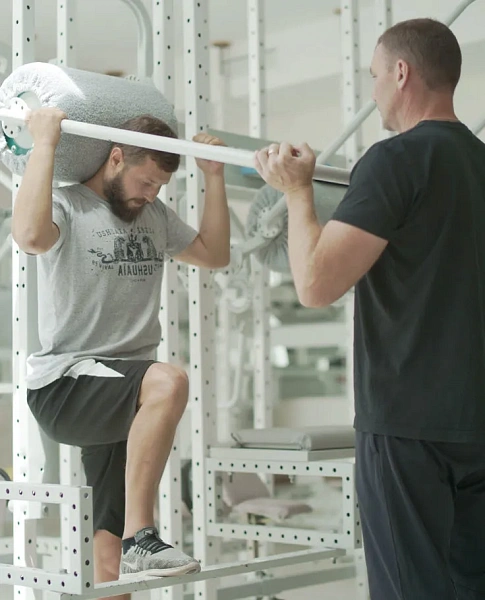
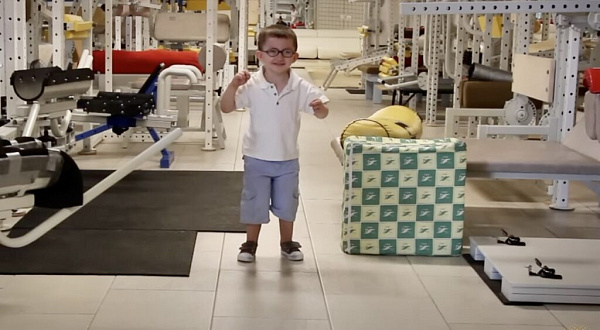
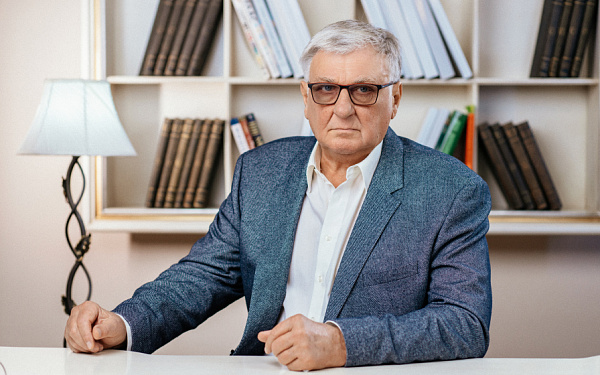
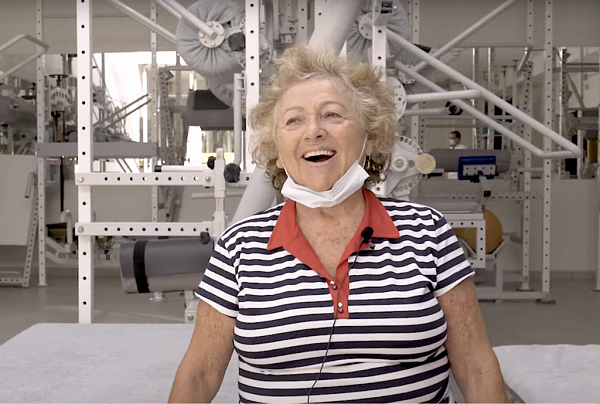

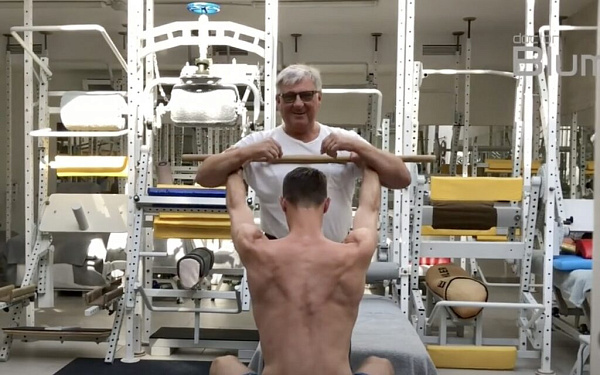
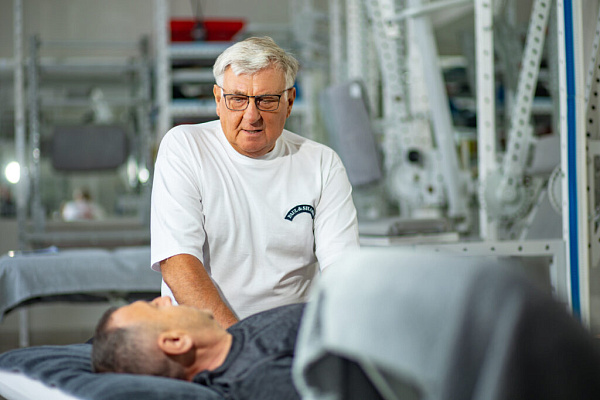

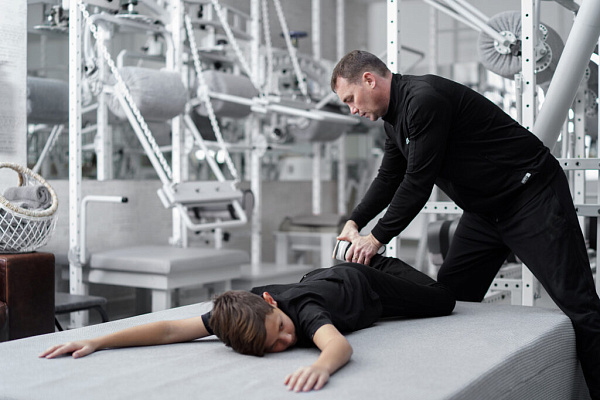

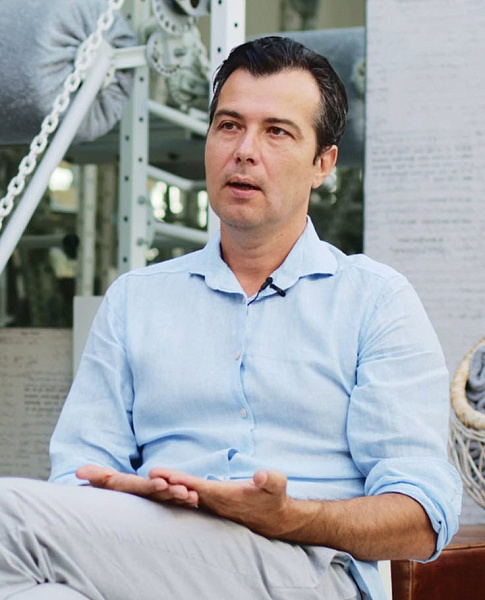
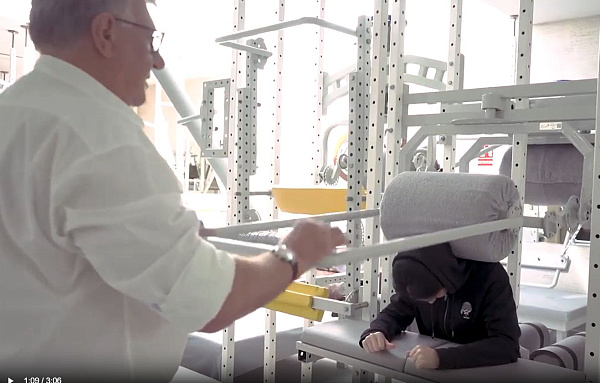
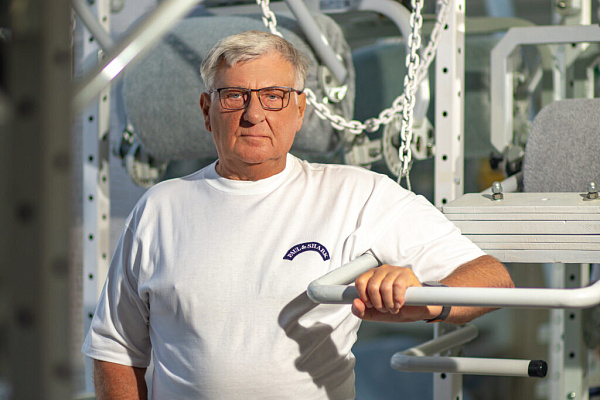
.webp)
